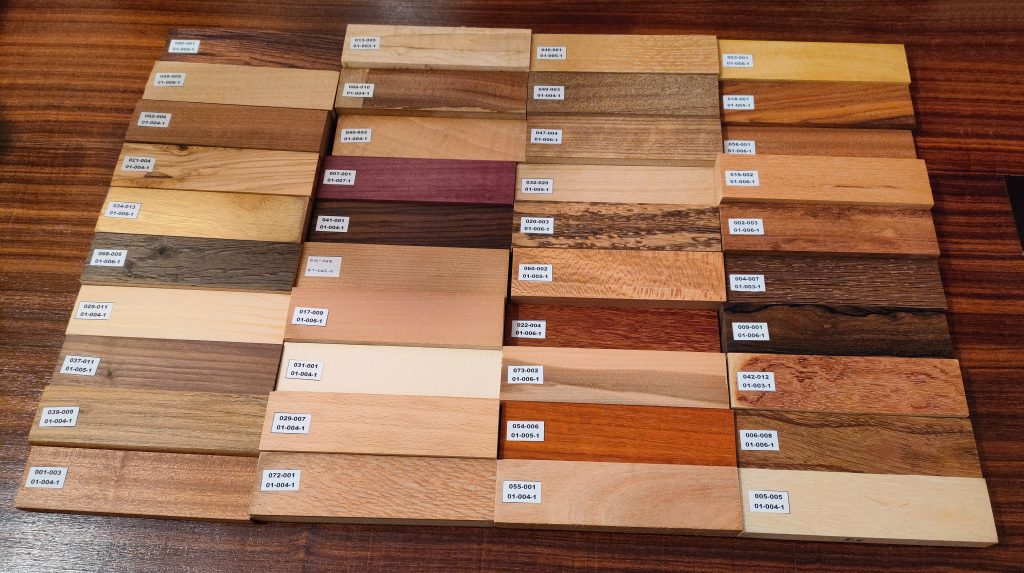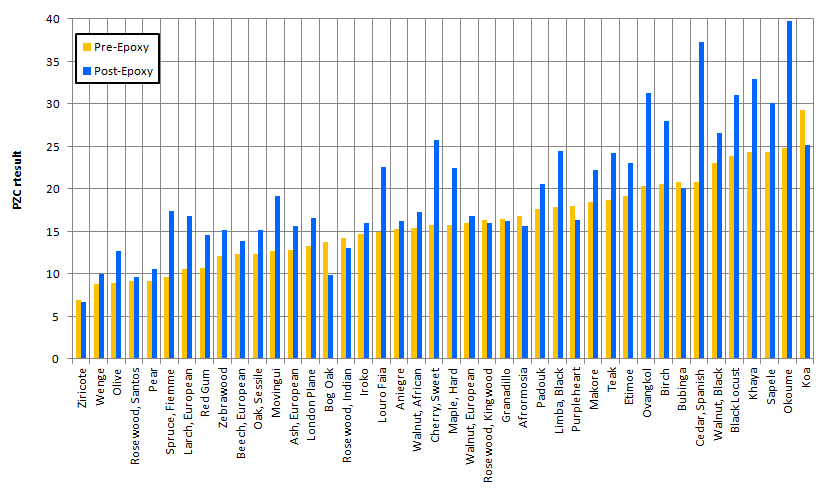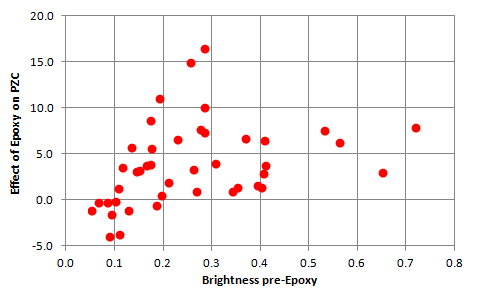This page shows the effects of epoxy resin on different wood species.
42 samples (42 different species) were sanded to 1500-grit and then their chatoyance was measured.

Then each sample was coated with epoxy resin in two layers, the first aimed at filling pores and the second aimed at providing a clear coat, with 240-grit sanding in between.
Then each sample was subjected again to PZC measurement.
The chart shown here reports a quick summary of the results:

On most species, epoxy has some beneficial effect (the average increase is +4 PZC points), while on some it has no effect or it even causes a deterioration.
The GIFS shown here compare the “before” and “after” conditions for two extreme cases: Spanish Cedar (PZC +16.5) and Bog Oak (PZC -3.8).




It must be remarked that Epoxy has a significant impact on brightness (-48% on average). It appears from chart below that this darkening effect causes dark wood species to lose their visible chatoyance, while lighter species are advantaged.

Based on the technical chatoyance value “P” it can be concluded that Epoxy always increases technical chatoyance, but the effect on visible chatoyance is negative for dark woods.
GIFs below show the results on all other tested wood species:







































